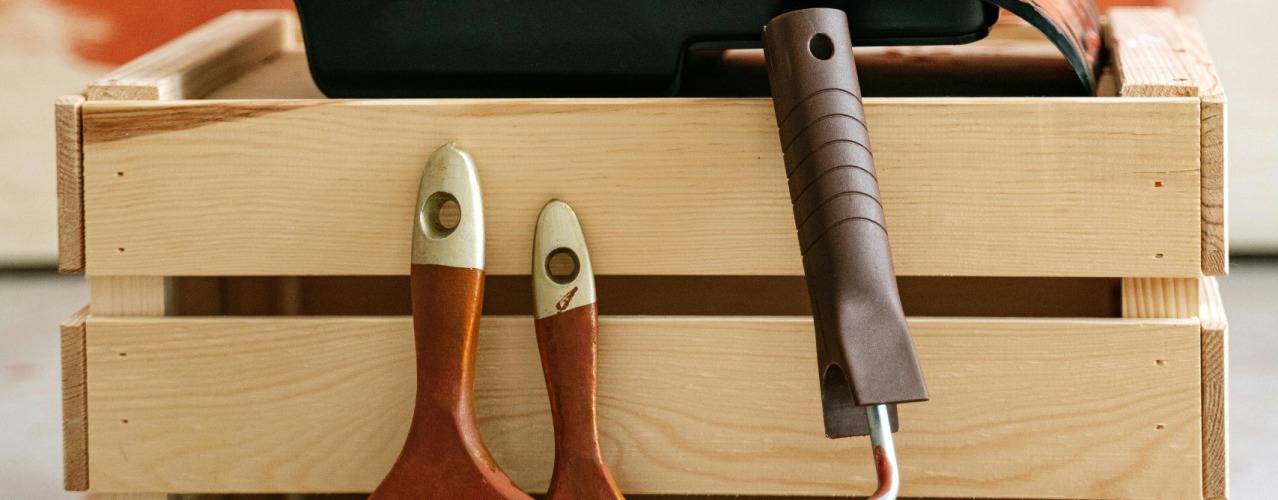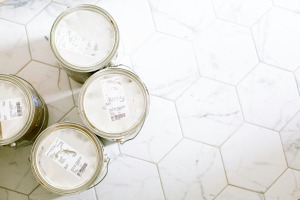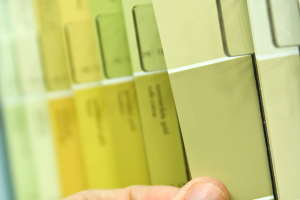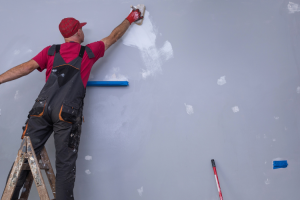

Market report
European Paint Market Insights
The Painter Insight Monitor provides a comprehensive analysis of the European paint and coatings market, including buying behavior, brand preferences, and emerging trends.
Blogs I published 14 January 2025 I Dirk Hoogenboom
Key Trends Shaping the Paint and Coatings Market
Paint is the finishing touch to transforming spaces. While it’s easy to focus on the end result (like fresh walls, polished finishes and perfectly coated surfaces), industry professionals know that behind every stroke of a brush or pass of a roller is a world of changing trends and new challenges.
These aren’t far-off, future stepping stones – they’re what’s happening now, and what’s heavily influencing the way we work, the products we choose, the methods we rely on and future prospects. That’s why we’ll take a closer look at the key trends shaping the paint market. Here’s the breakdown.


1. Labor Shortages A Growing Concern
If you’re in the painting industry, you’ve probably noticed projects taking longer because there aren’t enough skilled painters or projects being stretched thin because teams are smaller than they used to be. This is about a challenge affecting everyone from independent painters to large construction firms: hands-on-deck.
Are Painters Getting Younger?
To answer shortly – no, Europe’s professionals aren’t getting younger. The share of Gen-Y is increasing, yes, but this doesn’t mean more of them are entering the profession. What we’re actually seeing is a generational transition. Baby boomers – who still make up about 18% of the workforce – are retiring, and this outflow is reshaping the general profile of European painters: younger ones make up more of the share simply because they’re the ones staying in circulation. But there still aren’t enough of them filling the ranks to offset this shift. The Gen-Y increase is higher in Belgium and Spain (up by 20 points), but a majority of workers (46%) consists of Gen-X, i.e. workers from age 43 to 58.
European Shares
Take the UK for example. The average age of painters reached 55 in 2023, clearly highlighting an older workforce. So, as more of these workers retire, the industry’s average age will drop. But this won’t be offset by an influx of younger workers. In fact, Europe faces an acute labor shortage in the painting sector, with the Netherlands, Denmark and Spain reaching 89.3%, 86.7% and 84.6% respectively. The numbers are, to a certain extent, better in France (43.5%), but a shortage of almost 50% can hardly be considered good news. The combination of aging professionals leaving and fewer younger ones entering suggests that Europe’s labor shortage in the painting industry may further deteriorate in the coming years. So, the real challenge will be replacing the retiring professionals.
For contractors and companies, this shortage translates to new ways of getting the work done. As projects grow more complex and deadlines become tighter, the need for skilled hands is more critical than ever. If the trend continues, the paint market faces a future where delays and rising costs could become the norm.
2. Mechanical Application in Painting
The move toward more efficient, mechanical applications – like spray painting – is very slowly gaining momentum. As painters look for ways to complete jobs faster and with less manual labor, handheld and airless sprayers become more and more attractive. Yet, they’re not universally adopted. Here are the key points.
Handheld Paint Sprayers
Across Europe, 14% of painters have purchased a handheld paint sprayer in the last year, and adoption is particularly strong in Spain, where 24% of painters have made this purchase. On the other hand, countries like Poland and France show a much lower uptake (8% and 9%, respectively). Interestingly, 45% of painters have never purchased a handheld sprayer, indicating that while interest is rising, it hasn’t quite become the norm.
Airless Paint Sprayers
Similarly, airless paint sprayers are gaining ground, with 15% of painters reporting a purchase within the last year. Spain, again, leads the way with 28% of painters opting for these tools, and the adoption rate again drops significantly in France (8%) and Poland (9%). The overall average shows that 36% of painters have never used an airless sprayer, further showing the slow pace of adoption and hesitancy to adapt.
The takeaway? Mechanical spray-painting tools are becoming indispensable for tackling larger workloads and meeting tight deadlines, and painters who’ve adopted them report major productivity gains. With significant room for growth – especially in markets with slower adoption and an otherwise conservative industry – there’s a clear opportunity for education and accessibility.
3. Sustainability and Painting – What Matters Most?
Sustainability is an industry-wide word, but – truth be told – it means different things for different sectors. So when it comes to painting, what are the professionals saying? Turns out, not what we’d expect.
European Trends in Sustainability
The key focus for European painters remains durability. For 42% of them, a long lifespan is the key attribute of sustainable products, holding especially true for Belgium (64%), the Netherlands (63%) and Sweden (60%). Environmental friendliness, water-based, solvent-free products or biodegradable products make up a tellingly smaller share (13%, 6%, 6% and 5%), with some countries having a broader understanding of what makes a product sustainable.
Italy is at the forefront, with biodegradable products making up 24%, eco-friendliness 21% and solvent-free products 16%, and Sweden and Denmark emphasizing eco-friendliness (14% and 16%). Painters are starting to understand the value of sustainability, it’s just taking a bit longer to catch on.
Sustainable or Long-Term?
As far as top criteria for buying sustainable products go – durability (38%), quality and ease of use (19%) or pricing (16%) – we’re noticing that they’re more closely linked to functional performance than actual environmental impact. More specific and detailed markers (like water-based products, a low carbon footprint, recyclable materials or a transparent supply chain) were only mentioned by a small share of painters, clearly underscoring traditional preferences in the industry.
We’re seeing an interest in low-VOC and water-based alternatives – both safer and more sustainable – but the numbers seem disheartening. Low-VOC and zero-VOC make up a humble 3% of specific painter interests, while solvent-free paints fare somewhat better with 4%, but these figures barely stack up against an overwhelming preference for productivity and reliability, meaning: painters are looking for reliable, high-quality products that get the job done before considering how eco-friendly they are.
More Wood, More Coatings
The growing popularity of wood-based construction – a trend we’ve covered abundantly – is driving demand for specialized coatings, particularly wood lacquers that provide the durability needed for wood surfaces while increasingly aligning with sustainability goals.
This shift is significant, as wood requires more care and coatings compared to other materials like plastics. In fact, 82% of painters report that sustainable products are most often used for lacquers or wood care, highlighting their importance in today’s market. These advancements are a happy middle-ground between meeting environmental standards and performing best where it matters most.
4. Buying Behavior – Painters Stick to What They Know
When it comes to buying paint and coatings, painters aren’t keen on experimenting. Specialized wholesalers remain their go-to, and the industry’s overall buying habits lean toward the traditional. Across product categories like paint, consumables and power tools, the decision-making process remains firmly rooted in practicality.
Durability Comes First
For the majority of painters, durability is the top factor when buying sustainable products. It’s the leading criterion across the board, with 38% of all respondents ranking it highest and an even greater share (49%) prioritizing it when it comes to power tools. Reliable products that stand the test of time simply make the job easier, especially under tight schedules and budgets.
Quality Over Flash
Ranked second overall (19%), quality is the next key concern. Whether it’s a paint that goes on smoothly or a tool that’s built to last, painters value dependable performance over marketing claims. For paint specifically, this criterion rises even higher, with 23% of respondents highlighting it as a priority.
Price Still Matters
Affordability rounds out the top three, with 16% of all respondents citing it as an important factor. While painters are willing to invest in high-quality, durable products, cost remains a crucial consideration.
Manufacturer Tips
Painters see a role for manufacturers in making sustainable transitions easier. In fact, a majority agree that manufacturers should provide more information about sustainable products to both painters (64%) and end-users (66%), offer take-back programs for old products (63%) and replace current assortments with more sustainable options (62%). Bridging the gap between performance and eco-consciousness will be key for manufacturers to earn the trust and loyalty of the industry.
What’s Next for the Paint Industry?
The paint and coatings industry isn’t just about finishing touches anymore. Nowadays, it’s more about adapting to new challenges, embracing new technologies and staying sustainable. From labor shortages to new tools, this sector is changing fast, and keeping up means staying informed. So, get ahead of the curve: check out our webinars, blogs and detailed reports that dive deeper into these topics.
Construction Consulting Services for You
We provide tailor-made market research and off-the-shelf reports, both B2B & B2C, qualitative and quantitative. Here are some you might be interested in
Discover new opportunities in paint and coatings through thorough market analysis and trend spotting.
Innovate with eco-friendly formulas and advanced finishes that match evolving consumer demands.
Target distinct consumer groups effectively with tailored solutions and messaging.

Read more

Fresh Insights Await
Our relevant reports
Delve into the newest findings across various market segments, crafted for a cutting-edge overview. Explore our insightful reports, brimming with up-to-date data, trend analyses, and in-depth examinations, all tailored to provide you with a comprehensive understanding of the current market dynamics.
Construction
Home Improvement
Installation
Special reports













